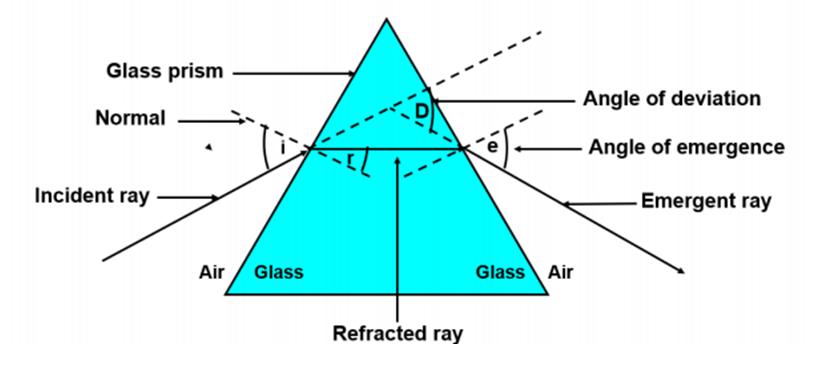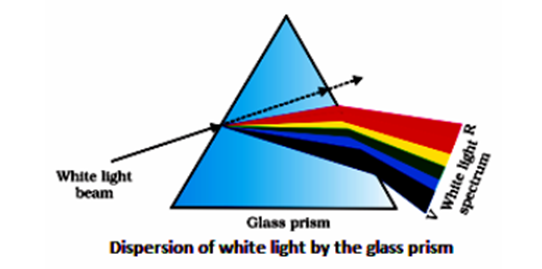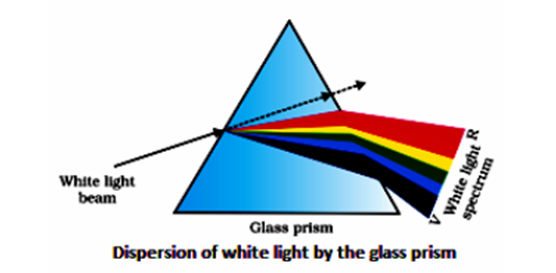NCERT Solutions for Class 10 Science Chapter 11 Human Eye and the Colourful World Important Questions
Here are the Human Eye and the Colourful World important questions for CBSE Class 10 Science Chapter 11. The important questions we have compiled will help the students to brush up on their knowledge about the subject. Students can practiceClass 10 Science important questions to understand the subject better and improve their performance in the board exam. The solutions provided here will also give students an idea about how to write the answers. Take Free Online MCQ Test for Class 10
Human Eye and the Colourful World Important Question for CBSE Class 10 Science Chapter 11
Video of Human Eye and the Colourful World Important Questions
|
Human Eye and the Colourful World MCQs |
Human Eye and the Colourful World Class 10 Science MCQs (1 Mark)
Q1. Twinkling of stars is due to atmospheric
(a) Dispersion of light by water droplets
(b) Refraction of light by different layers of varying refractive indices
(c) Scattering of light by dust particles
(d) Internal reflection of light by clouds
Answer – (b) refraction of light by different layers of varying refractive indices
Q2. The danger signals installed at the top of tall buildings are red in colour. These can be easily seen from a distance because among all other colours, the red light
(a) is scattered the most by smoke or fog
(b) is scattered the least by smoke or fog
(c) is absorbed the most by smoke or fog
(d) moves fastest in air
Answer – b is scattered the least by smoke or fog
Q3. When light rays enter the eye, most of the refraction occurs at the
(a) crystalline lens
(b) outer surface of the cornea
(c) iris
(d) pupil
Answer – b outer surface of the cornea
Q4. Why is red colour light used in trains during fog?
(a) It has low wavelength and least scattered
(b) It has high wavelength and highly scattered
(c) It has high wavelength and least scattered
(d) It has low wavelength and highly scattered
Answer – c. It has high wavelength and least scattered
5. The angle of incidence i and refraction r are equal in a transparent slab when the value of i is
(a) 0°
(b) 45°
(c) 90°
(d) depend on the material of the slab
Answer – (a) When the incident ray falls normally on the glass slab, it will refracted without deviation, i.e. along the normal in the glass slab. So, ∠i = ∠r = 0
See Human Eye and the Colourful World Important Questions Video
Q6. Which of the following statement is correct?
(a) A person with myopia can see distant objects clearly.
(b) A person with hypermetropia can see nearby objects clearly.
(c) A person with myopia can see nearby objects clearly.
(d) A person with hypermetropia cannot see distant objects clearly.
Answer (c) A person with myopia can see nearby objects clearly.
Q7. Myopia may arise due to
(a) excessive curvature of the eye lens
(b) elongation of the eyeball
(c) both (a) and (b)
(d) none of these
Answer – (c) both (a) and (b)
Q8. Type of lens used in correction of myopia
(a) convex lens
(b) concave lens
(c) reflecting lens
(d) bifocal lens
Answer – (b) concave lens
Human Eye and the Colourful World Class 10 Science 1 Mark Questions
Q1. Why does the Sun appear reddish early in the morning?
Answer – In the early morning, the sun is situated near the horizon. Light from the Sun passes through thicker layers of air and cover larger distance before reaching our eyes. Therefore, blue light scattered the most and red light least. This is why the sun appears reddish early in the morning.
Q2. Why does the sky appear dark instead of blue to an astronaut?
Answer – Sky appears dark instead of blue to an astronaut because there is no atmosphere containing air in the outer space to scatter sunlight. As there is no scattered light to reach our eyes in outer space, so the sky appears dark.
Q3. Why does the Sun appear white at noon?
Answer – The light is least scattered at noon
Q4. When a monochromic light having only one wavelength, passes through a prism, will it show dispersion?
Answer – No, it will not show dispersion. It will only show deviation
Q5. The sun can be seen about two minutes before actual sunrise and two minutes after actual sunset. Why?
Answer – The sun can be seen about two minutes before actual sunrise and two minutes after actual sunset because of atmospheric refraction.
Q6. Name the component of white light that deviates the least and the component that deviates the most while passing through a glass prism.
Answer – Least deviated component: Red Most deviated component: Blue
Class 10 Science Human Eye and the Colourful World 2 Marks Questions
Q1. Why there is no dispersion of light refracted through a rectangular glass slab?
Answer – After refraction at two parallel faces of a glass slab, a ray of light emerges in a direction parallel to the direction of incidence of white light. As rays of all colours emerge in same direction, i.e., the direction of the incidence of white light, there is no dispersion. However, there is a lateral displacement.
Q2. Is the position of a star as seen by us in its true position? Justify your answer.
Answer – No, light from stars undergoes atmospheric refraction which occurs in medium of gradually changing refractive index. So, we see the apparent position of the star after refraction by atmosphere.
Important Videos Links
Human Eye and the Colourful World Class 10 Science 3 Mark Questions
Q1. How will you use two identical prisms so that a narrow beam of white light incident on one prism emerges out of the second prism as white light?
Answer – By using two identical prisms, one placed inverted with respect to the other, we get a narrow beam of white light incident on one prism emerges out the second as white light.

Q2. Draw a neat diagram to show the refraction of a light ray through a glass prism, and label it
Answer –

Class 10 Science Human Eye and the Colourful World 5 Marks Questions
Q1. Draw a ray diagram showing the dispersion through a prism when a narrow beam of white light is incident on one of its refracting surfaces. Also, indicate the order of the colours of the spectrum obtained.
Answer –

Q2. How does refraction take place in the atmosphere? Why do stars twinkle but not the planets?
Answer – Atmosphere is made up of several layers. The layer at the top is optically rare, while the layer at the bottom is optically denser. Due to this, when light travels through different layers of the atmosphere, refraction takes place.
Since light passes through denser and denser layer as it moves through atmosphere, it tends to bend towards the normal. Stars are very far from us; compared to planet. Due to this, stars serve as point source of light. As a result, even a slightest change in their apparent position in the sky is clearly perceived by us. Hence, stars appear to twinkle. Planets on the other hand, are near to us. Hence, they do not serve as point source of light. Hence, minor changes in their apparent position are not perceived by us. Hence, planets do not appear to twinkle.
Q3. i) Demonstrate an activity with a well labelled diagram to prove that white light is made up of seven colours.
ii) Which colour of light bends least and which one the most while passing out from the prism? Also, state the reason for the same.
Answer – i) The phenomenon of splitting of a beam of white light into its seven constituent colours when passed through a transparent medium is known as dispersion, which was first discovered by Issac Newton in 1666. To understand this phenomenon,
Let us take a thick sheet of cardboard and make a small hole or narrow slit in its middle allow sunlight to fall on the slit. This gives a narrow beam of white light. Now, take a glass prism and allow this white light to fall one of its faces as shown in figure. Turn the prism slowly until the light that comes out of it appears on a nearby screen.

We see a beautiful band of seven colours on the screen called visible spectrum. The sequence of colours seen from the lower part of the screen is violet (V), indigo (I), blue (B), green (G), yellow (Y), orange (O) and red (R). The acronym for this is VIBGYOR

ii) Red light has the maximum wavelength and violet light has the minimum wavelength, so in a transparent medium except air and vacuum, red light having the largest wavelength suffers the least deviation while violet light having the least wavelength bends the most.
Important Questions Videos Links